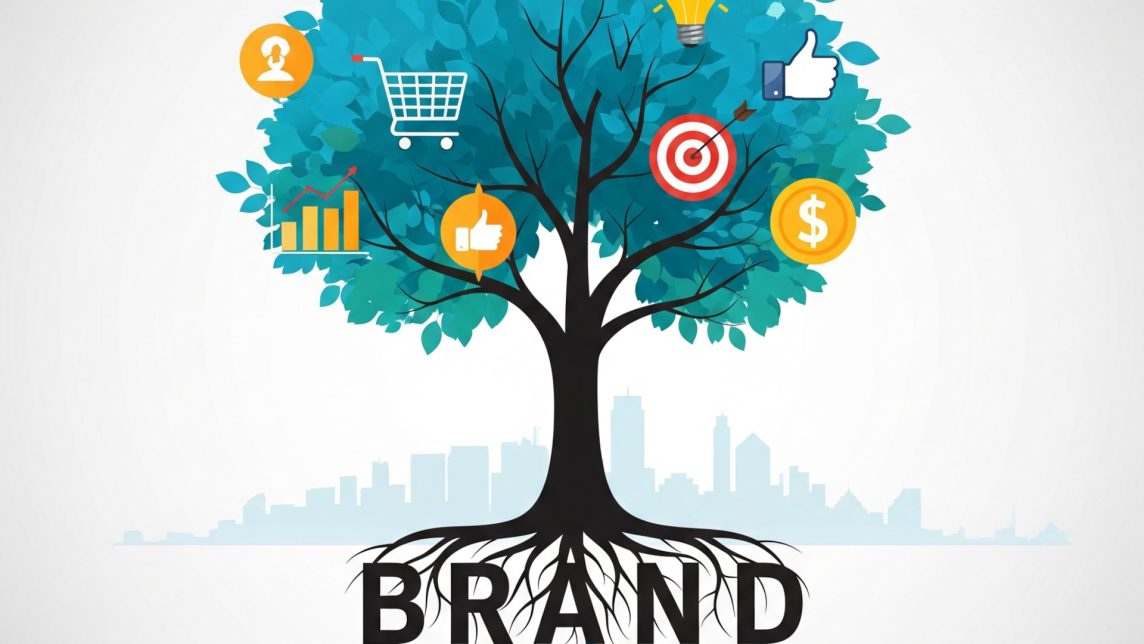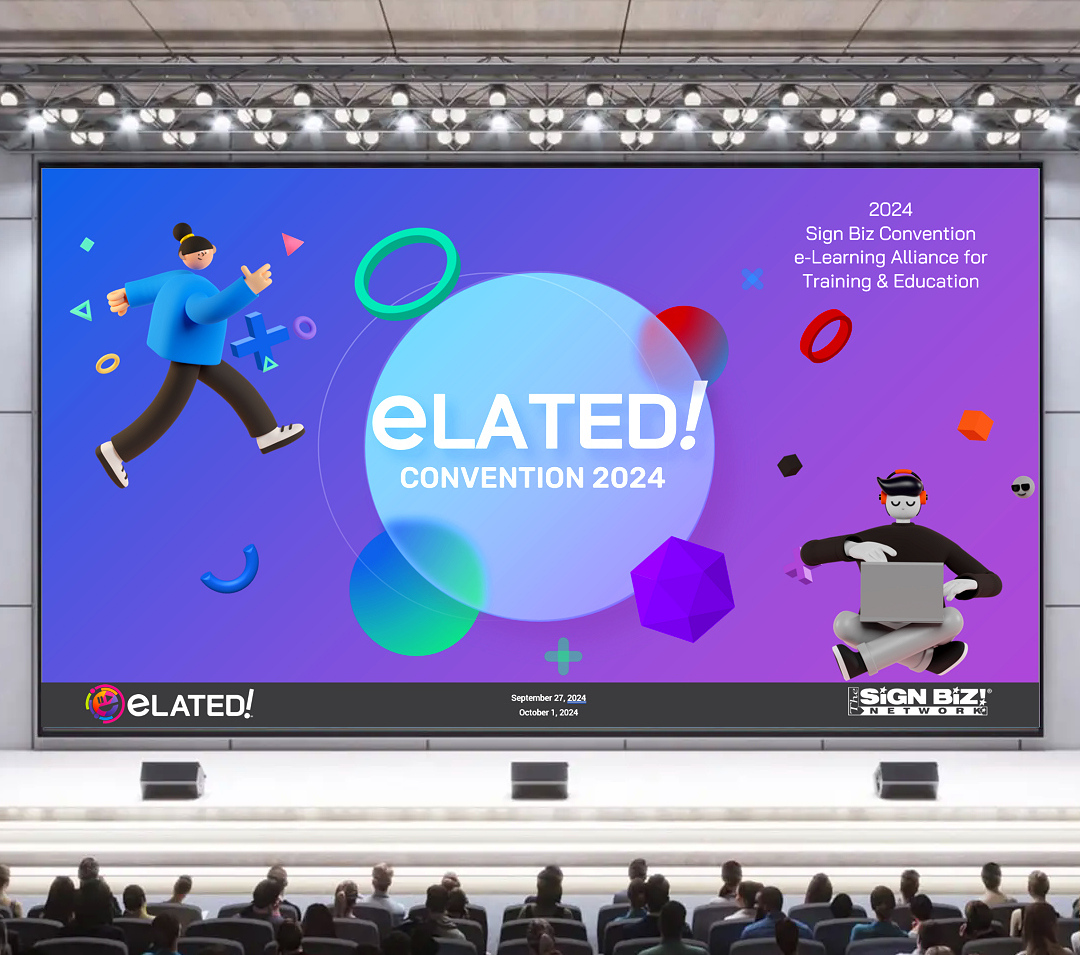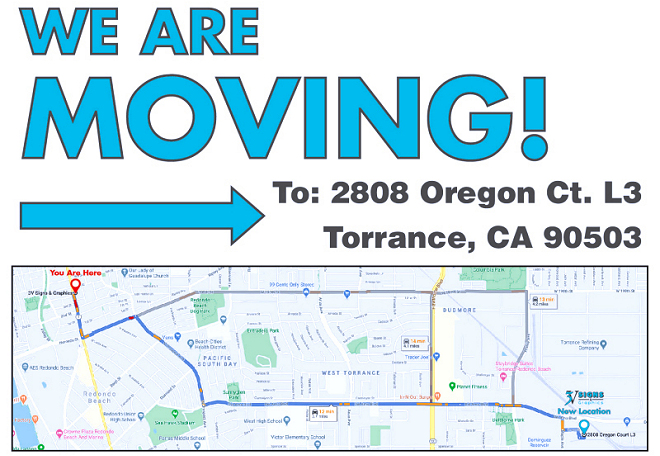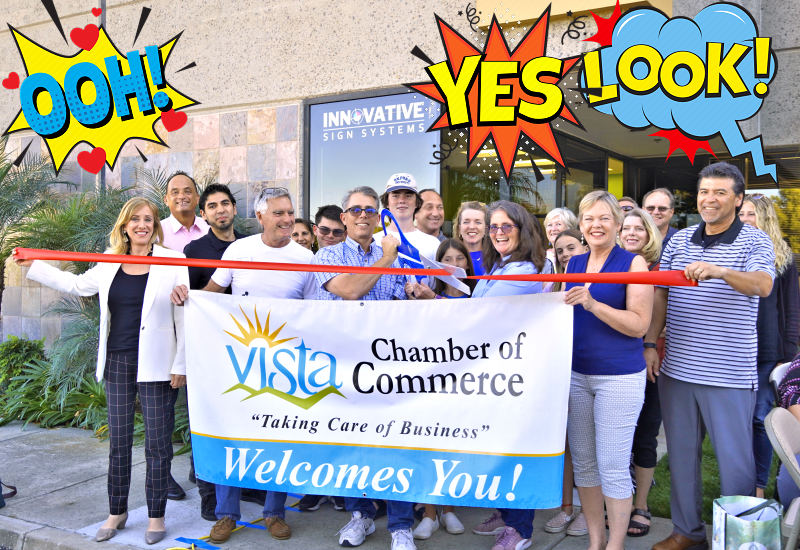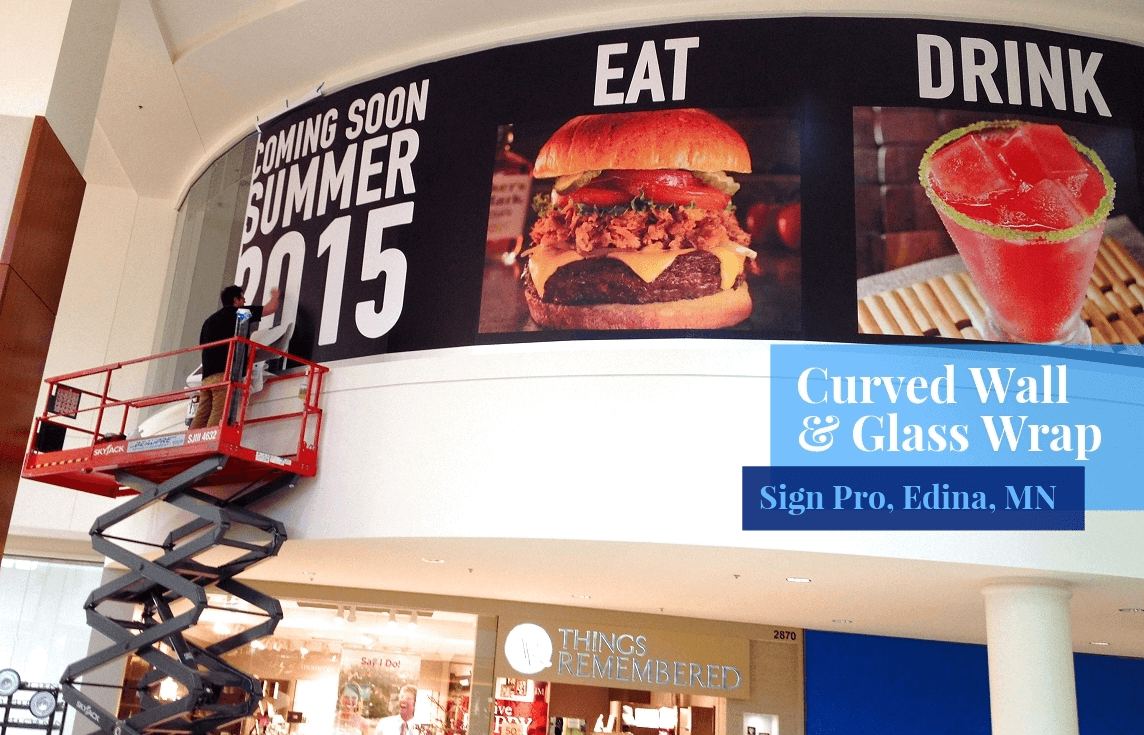Branding is more than just a logo; it’s the story, personality, and heartbeat of your business. When done right, it makes people feel like they belong with you. For small business owners, the challenge lies in carving out a space that feels authentic while also standing out in a crowded marketplace.
Voice, Values, Design: A Beginner’s Guide to Branding
By Ed Carter at ablefutures.org
Branding is often the divider between a successful business and a middling one, and yet it’s still a commonly overlooked aspect of the work process by many entrepreneurs. Much of the reason for this comes down to a misunderstanding of what branding is and how to manage it consistently. In this first-look guide, Sign Biz explores its definitions, the way it can affect consumer interactions, and how to begin implementation.
In a sentence, branding is the identity of your business in the minds of the consumer. It is both critical for your business’s long-term success and challenging to get right. Developing a solid brand requires commitment, planning, and diligent work.
The question, then, is how can we shape and mold this identity in a way that is favorable for the company and, ultimately, its bottom line? For generations, brands have achieved this with the best creative talent. A few hundred highly-skilled copywriters, graphic designers, and marketing managers working in sync can sculpt a brand identity that is unmistakable in the mind of the consumer.
This creative team will attack three key components: voice, values, and design.

Your brand’s values are the guiding principles. It helps if you and your team also believe and abide by these values – often, companies will suggest they stand for one thing and then, internally, do something else. Your brand values will endear you to different sets of consumers, as well as affect business decisions and PR activity.
Your brand’s voice alludes to the way your brand speaks to its customers/clients through marketing and in all external-facing, company-related media. It should be built to reflect your key demographics and to help drive internal company OKRs (objectives and key results). This means that you have a set tone of writing and a specific lexicon that your writers will draw upon. If you are a B2B financial consultancy, this is more likely to be formal, jargonistic, and direct. If you are a consumer-facing teenage makeup brand, you may opt for something more casual and laissez-faire.
As the consumer’s first touchpoint, the design of your brand is arguably its most important component. Modern consumers will form a perception of your company immediately based on the colors you use, the shape of your typography, and the style of your logo. This is why it’s crucial to know exactly who you’re targeting, their preferences, their spending habits and to craft aesthetics around this data.
It’s important to note that all three branding components feed off one another. Ideally, your brand values should affect the way your company looks, and occasionally the way your company looks can feed back on the way it sounds or the things it purports to believe.

If you’re on a shoestring or you’re confident enough in your own artistic sensibilities, it’s also possible to do much of the legwork on your own. For example, you can sketch out and provide examples of logos you like, then ask your local sign shop designer to build a logo for you. The shop professionals know good design, effective logotypes. You could also try following one of the many online guides to craft your own brand voice — employing it across social media and on your company site.
Once you have the foundations of branding in place, you’ll often find that the next steps (to do with marketing, sales, customer service, etc.) reveal themselves. For now, your main priority should be to craft a truly unique, personal identity that resonates with clients/customers and to stick with it consistently.

Credits: Photo Top- Pexels, Eva Bronzini
2022 CONVENTION A PERFECT 10!
Surprise services, free classes, bid portals, networking and 30th Anniversary Dinner Party kept attendees energized and delighted!
Manufacturing Success!
“3V Signs and Graphics is manufacturing success – even during a pandemic, they expanded in a big way. They have new…
Innovative Sign Systems Lives Up to its Name!
“Innovative Sign Systems is a new, cutting-edge visual communications company in Southern California,” states Teresa M. Young…
Icons of Industry Wow Convention Attendees
Surprise services, free classes, bid portals, networking and 30th Anniversary Dinner Party kept attendees energized and delighted!
Installation Nation 2 Revealed
The depth and breadth of national sign company relationships presented by panelists was extraordinary. Five presenters took center stage on April 27th at Planet Hollywood to provide a full spectrum of tools and empowering guidance for national installation work.
Best. Convention. Ever.
The big event of 2018 in Orlando, FL, co-hosted with the ginormous ISA Expo, was unforgettable!
Mustang Sign Group Achieves G7 Master Certification
Mustang Sign Group, a Sign Biz Member located in Kennewick, WA, has earned the G7 Master Qualification Seal demonstrating that the company uses the most modern technology.
What 2016 Means for 2017
Busiest December in recent history caps a high-growth year. Plenty of evidence points to six strong trends leading into 2017, ranging from value building strategies to differentiation by design. A look back at some of 2016 highlights finishes with some valuable takeaways in this article.
Convention of 2016 “The Best of All Worlds!”
“Envision 2016” was everything it was built to be, and then some. Co-Hosted with the world’s largest sign trade show, the ISA Expo…
Color Rendering DP Needs Sunshine on a Cloudy Day
We are going to demystify Perceptual Color, and CRI (Color Rendering Index) in terms that should lead to good decisions, and make your shop vibrant at the same time!
2016 3M Advanced Installer Training for Members
Sign Biz, Inc. today announced over 50 new Certified Installer Training classes for 2016. Five 3M Graphics Authorized Training & Testing Providers across the US will offer special rates for 3M Advanced Installer Training to Sign Biz Members.
Wall Graphics: Impressions That Stick!
Wall graphics and murals are “In” and they are powerful purveyors of…
Onboarding in a Sign Shop
Onboarding, also known as organizational socialization, refers to the mechanism through which new employees acquire the necessary knowledge, skills, and behaviors to become effective organizational members and insiders.
Thus states the official definition developed by HR gurus, and published by Wikipedia. Most people think of onboarding as a one day or one week event, that commences with the new hire’s first day on the job. But step back a moment, and note that there is great cost to bringing on a new employee, and you have to get it right. So attracting the right hire is actually step one. And that begins with your company’s image, brand, and promise to clients.
So what do employees want? A new survey of more than 600 employees, conducted by the Society for Human Resource Management found 72% of employees rank “respectful treatment of all employees at all levels” to be the most important factor in job satisfaction.
The other factors in the top 5 are trust between employees and senior management (64%); benefits (63%), compensation/pay (61%); and job security (59%). As for the actual work itself? It ranked No. 11.
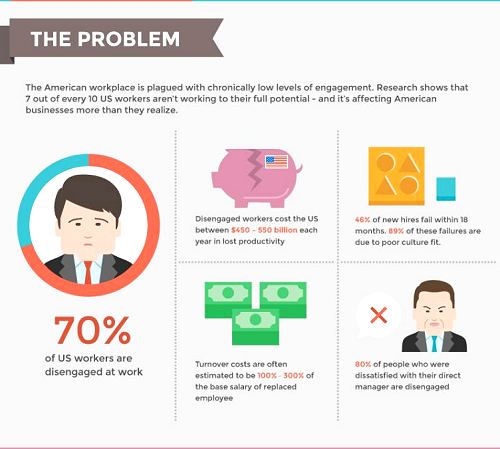 Knowing that your company culture and respectful treatment from management are top priorities, we can begin. Fact: 46% of people will fail within the first 18 months of a new job mainly because of poor culture fit. Before you let that little voice in the back of your head argue that you don’t want to coddle employees or treat them with kid gloves, remember this: When you give good treatment, you are actually keeping your costs down.
Knowing that your company culture and respectful treatment from management are top priorities, we can begin. Fact: 46% of people will fail within the first 18 months of a new job mainly because of poor culture fit. Before you let that little voice in the back of your head argue that you don’t want to coddle employees or treat them with kid gloves, remember this: When you give good treatment, you are actually keeping your costs down.
Why? Pay Attention: Thirty case studies taken from the 11 most-relevant research papers on the costs of employee turnover demonstrate that it costs businesses 100% – 300% of a worker’s salary to replace that worker. For businesses that experience high levels of turnover, this can add up to represent significant costs! If, heaven forbid, you have five turnovers in one year, you just cost your business one entire team’s salaries for the year!
Now that we have your attention, let’s talk onboarding. Fact: New employees are 69% more likely to stay more than three years if they’ve experienced a well-structured onboarding program.
 You have a workstation set up, a business card order form with title checked off, a pile of HR paperwork to be completed, and a tour of your shop and parking lot instructions. You’re ready for your new hire’s first day, right? Um, not so fast.
You have a workstation set up, a business card order form with title checked off, a pile of HR paperwork to be completed, and a tour of your shop and parking lot instructions. You’re ready for your new hire’s first day, right? Um, not so fast.
That list of prep items is actually going to cover about an hour and a half. So then what? Assign the New Employee Handbook as required reading for the rest of the day? Lame. At least that is what your new hire may be thinking! If you plan on maximizing the beneficial outcomes for your company as well as for this eager beaver you will see every day, you need to think in terms of a month of orientation. Yes, that is what our own schedule for new sign business owners presents, in a clearly laid out calendar covering four weeks of OTJ training.
Here are some examples for the first day:
- Workstation prepared, phone, file drawer, clean chair, bulletin board and trash bin
- Welcome gift – a great mug, a tape measure/ note pad / all in one, a welcome to the team signed by everyone else.
- Scheduled meeting with all employees, to break the ice
- Employment paperwork completed, position description reiterated, paydays, the week ahead
- Tour of each piece of the business, how it fits together
- Informal lunch with manager or bring in pizza for everyone and hold the informal meet and greet then.
- Some downtime that first day
- End of day Q&A, check in with the new hire for lingering questions, etc.
A simple plan of action for the weeks ahead will help you avoid assigning “busy work” to the new team member. We’ve all been there: Knowing that the newbie is not ready to “go it alone” we assign a safe task that will eat up some time until we can get to the next piece of training.
Many companies have a 90-day introductory period during which new employees are under assessment for their fit with the company, and their job performance. Though you likely intend to provide the feedback at the end of the 90-day period, it is wise to give 30-day and 60-day evaluations along the way. In addition, informal feedback daily is extremely important.
One of our new business owners – a first-time entrepreneur – explained the impact a new hire has on the existing team. He noted that it is not a new member of an existing team, but rather a new team that is created. Brand new. If you think of it this way, you can recognize the signs of the team being formed over that 90-day period, and you can help to guide its development.
Those reactions ranged from nervous, to insecure, to downright ill.
 At the 2014 SHRM Annual Conference and Exposition, the founders of Baudville spoke with many attendees about what it feels like to be a newbie. Those reactions ranged from nervous, to insecure, to downright ill. According to the stats, by the time your new employee has made it to the six-month mark, they have likely determined if they will stay long-term or not. So what you do beyond the 90-day mark matters.
At the 2014 SHRM Annual Conference and Exposition, the founders of Baudville spoke with many attendees about what it feels like to be a newbie. Those reactions ranged from nervous, to insecure, to downright ill. According to the stats, by the time your new employee has made it to the six-month mark, they have likely determined if they will stay long-term or not. So what you do beyond the 90-day mark matters.
Here’s the kicker: Retention rates for employees who are mentored are 72% higher than for those who are not mentored.
Hopefully this has given you a fresh perspective on the great onboarding process, and how this system can become a true representation of a great company culture. Spend a couple of days focusing your energy on developing a good strategy for new hires, and gain returns from this effort for years to come. 
We thank Sign Biz Members who contributed their experiences, and photo credits to Mustang Signs and SIGNWorks of Montery. We credit Roberta Chinsky Matuson for her insights published in Recognation. Roberta is known globally as The Talent Maximizer, and is the President of Matuson Consulting. www.matusonconsulting.com
